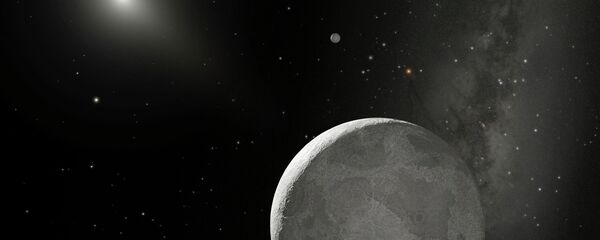Within days, tens of thousands of people from around the world were given access to images taken by the SkyMapper telescope at the Siding Spring Observatory.
They examined and analyzed over four million space objects, and four possible candidates for Planet Nine emerged.
The four objects found by the volunteers are still being studied, and little is known about them right now.
The team of astronomers will now have to confirm whether any of the objects are in fact Planet Nine.
Radio Sputnik talked to Dr. Brad Tucker, Research Fellow at the Research School of Astronomy and Astrophysics, Mt. Stromlo Observatory at the Australian National University, who explained the significance of this research.
"We have four unknown objects. What I mean is that there are objects that move, so they are not a star, not a galaxy. They could be an asteroid, a comet, a dwarf planet, they could be Planet Nine," he told Sputnik.
However they are too slow for aliens, he joked.
"They move across the sky and they are not known. No one has previously seen these objects. Whatever they turn out to be, we will discover four new things right away," he explained.
The scientist further noted that one object is moving pretty fast, so it is likely to be an asteroid, but the other three are moving slowly, as astronomers expect Planet Nine or other dwarf planets to move.
Right now they are follow up on the discoveries, he said, trying to locate the objects in space once more, because the three images they had were from last year, and they don't know where there are now. This will tell them about the orbits of the candidates, their trajectories and so forth, he said.
Dr. Tucker also reminded that this is exactly how Neptune was discovered, following a strange orbit slightly off Uranus.
By 1847 the planet Uranus had completed nearly one full orbit since its discovery by William Herschel in 1781, and astronomers had detected a series of irregularities in its path that could not be entirely explained by Newton's law of gravitation.
These irregularities could, however, be resolved if the gravity of a farther, unknown planet were disturbing its path around the Sun.
Pluto was discovered in much the same way as Planet Nine. Astronomer Percival Lowell noticed peculiarities in Neptune's orbit in 1906, and in 1930 Clyde Tombaugh discovered Pluto by comparing images of the sky to see what had moved. It would remain the ninth planet until 2006, when it was reclassified to a dwarf planet.
Dr. Tucker says that nowadays Pluto has a peculiar and strange orbit. The discovery of Planet Nine, he says, is a way to solve the dwarf planet, Pluto and the objects like Pluto, on the edge of our Solar System in order to explain their peculiar orbit. A large massive object on the outside through gravity would explain this.
"That is why we think Planet Nine exists," he concluded.





